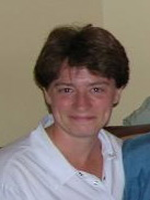 Position: Researcher
Position: Researcher
Affiliation: Cnism-Phys. Dept. University of Rome "La Sapienza", P.le A. Moro 2, I-00185 Rome, Italy
Office: Ed. Marconi, Room 338
Telephone: +39 06 4991 4208
Fax: ----
Email: saraDOTbonellaATroma1DOTinfnDOTit
It may be said that in every attentive look on nature we already theorize. But in order to guard against the possible abuse of this abstract view, in order that the practical deductions we look to should be really useful, we should theorize without forgetting that we are so doing, we should theorize with mental self-possession, and, to use a bold word, with irony.
W.G.
Research Interests
My work has focused mainly on developing simulation methods for studying condensed phase systems that exhibit quantum characteristics, with particular reference to non-adiabatic effects in the dynamics. In that connection, during my Ph. D., I have improved the numerical efficiency of existing semiclassical non-adiabatic methods by taking advantage of some formal properties of the mapping hamiltonian formalism for describing electronic transitions. Combining the mapping formalism with a well defined approximation of the path integral expression for quantum time correlation functions, I have also developed a novel mixed quantum-classical approach, called LAND-Map, for calculating such quantities. When applied to realistic models of condensed phase systems, and in particular to the diffusion properties of an excess electron in a metal-molten salt solution, this approach has proved considerably more efficient than other existing methods and very accurate. Recently, I have started studying systems of biological interest with the intent to combine coarse grained methods with non-adiabatic approaches of the kind described above. This would allow one to address, for example, the photophysical properties of a small quantum subsystem, such as a chromophore, embedded in a protein represented in a coarse grained scheme. In collaboration with my colleagues at the Scuola Normale Superiore, I have also developed a new method for the statistical analysis of protein alignments that helps to identify specificity determining residues in families of homologous proteins. The method has been successfully applied to recognize amino acids relevant in achieving a functional monomerization of the DsRed tetrameric protein.
Current Research Projects
Related Links
Teaching activity




